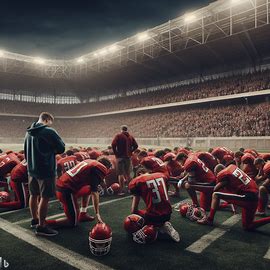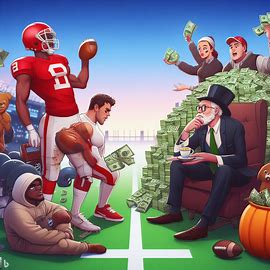Historically black colleges and universities (HBCUs) are institutions of higher education that were established before 1964 with the intention of primarily serving the African American community. They have played a vital role in providing access and opportunity for millions of students, especially those from low-income, first-generation, and underrepresented backgrounds. They have also produced some of the most influential leaders, scholars, artists, and innovators in various fields and sectors of society.
However, HBCUs have also faced many challenges and barriers throughout their history, such as discrimination, underfunding, and marginalization. These factors have created a significant gap in resources, outcomes, and recognition between HBCUs and non-HBCUs, which affects their ability to fulfill their mission and potential. In this article, we will explore some of the reasons why this gap exists, and what can be done to address it.
The Causes of the Gap
There are many reasons why HBCUs are struggling to generate equal revenue, enrollment, graduation rates, and prestige as non-HBCUs, but some of the main ones are:
Historical and systemic discrimination and underfunding : HBCUs have been historically excluded and disadvantaged by federal and state policies, as well as private donors and foundations. For example, the Second Morrill Act of 1890, which established land-grant HBCUs, required states to match federal funds for these institutions, but many states failed to do so or diverted the funds to other purposes. This resulted in a huge gap in endowment and resources between HBCUs and non-HBCUs over time.
Higher proportion of low-income, first-generation, and Pell-eligible students: HBCUs serve a larger share of students who come from low-income families, are the first in their families to attend college, or qualify for federal Pell Grants. These students often face more financial, academic, and social challenges than their peers at non-HBCUs. However, tuition revenue per student at HBCUs is lower than at non-HBCUs, due to lower tuition rates and higher financial need of students. Moreover, financial aid programs such as Pell Grants have not kept up with the rising costs of college, leaving many HBCU students and families with high debt burdens.
Less access to media rights, licensing, and other sources of revenue: HBCUs receive less exposure and coverage from major sports networks and conferences, which affects their ability to attract sponsors and fans. Additionally, HBCU alumni tend to have lower incomes and wealth than non-HBCU alumni, which limits their capacity to donate and support their alma maters. Furthermore, HBCUs have less access to other sources of revenue that non-HBCUs enjoy from their athletic programs and alumni networks.
These are some of the reasons why HBCUs are struggling to generate equal revenue like non-HBCUs. However, there are also many efforts and initiatives to address these challenges and support the sustainability and growth of these vital institutions.
The Solutions for the Gap
There is no single or simple solution for bridging the gap between HBCUs and non-HBCUs. It requires a comprehensive and collaborative approach that involves multiple stakeholders and strategies. Some of the possible solutions are:
Increasing federal and state funding and accountability :
The federal government should increase its investment in HBCUs through programs such as Title III (Strengthening Historically Black Colleges), Title IV (Student Aid), Title V (Developing Hispanic-Serving Institutions), Title VI (International Education), Title VII (Graduate Education), Title VIII (Tribally Controlled Colleges), Title IX (Gender Equity), Title X (Minority Science Improvement), Title XI (Alaska Native/Native Hawaiian Institutions), Title XII (Teacher Quality Enhancement), Title XIII (College Access Challenge), Title XIV (Health Education Assistance Loans), among others. The federal government should also ensure that states comply with their matching obligations for land-grant HBCUs under the Second Morrill Act of 1890.
The federal and state governments should increase their investment in HBCUs and ensure that they receive fair and adequate funding for their athletic programs. They should also hold both HBCUs and non-HBCUs accountable for their performance on key indicators such as graduation rates, retention rates, student debt levels, job placement rates, and research productivity
Expanding philanthropic gifts, corporate partnerships, and grassroots campaigns :
Philanthropists, corporations, and individuals should increase their support for HBCUs through donations, sponsorships, and collaborations. For example, in 2020,Netflix announced a $120 million commitment to support scholarships at Spelman College, Morehouse College, and the United Negro College Fund.
In 2021,MacKenzie Scott donated $40 million each to Howard University, Hampton University, Tuskegee University, and Xavier University of Louisiana.
In the same year, Deion Sanders, the head coach of Jackson State University’s football team, signed Travis Hunter, the top recruit in the nation, who became the first five-star prospect to join an HBCU. These actions have raised awareness and funds for HBCUs and inspired others to follow suit. Additionally, grassroots campaigns such as #HBCURising, #HBCUStrong, #HBCUGivingDay, and #HBCUChallenge have mobilized social media users to celebrate and support HBCUs.
Enhancing academic quality, innovation, and diversity:
HBCUs should continue to improve their academic quality, innovation, and diversity by offering rigorous and relevant curricula, engaging in cutting-edge research, and attracting and retaining diverse and talented faculty, staff, and students. HBCUs should also leverage their unique strengths and niches, such as their cultural heritage, social justice mission, community engagement, and alumni loyalty. HBCUs should also collaborate with other HBCUs and non-HBCUs to share best practices, resources, and opportunities.
For example, the Atlanta University Center Consortium (AUCC) is a partnership among Clark Atlanta University, Morehouse College, Spelman College, and Morehouse School of Medicine that offers cross-registration, joint degree programs, and shared facilities.
The Thurgood Marshall College Fund (TMCF) is a national organization that represents 47 public HBCUs and provides scholarships, leadership development, and career opportunities for students and alumni.
Increasing media exposure, licensing, and other sources of revenue :
HBCUs should increase their media exposure, licensing, and other sources of revenue by negotiating better deals with sports networks, conferences, and sponsors. They should also diversify their revenue streams by exploring new markets, products, and services. They should also capitalize on the popularity and influence of their coaches, players, and alumni.
These are some of the possible solutions for bridging the gap between HBCUs and non-HBCUs. However, these solutions are not exhaustive or exclusive. There may be other ways to support and strengthen HBCUs that are not mentioned here. The important thing is to recognize the value and impact of HBCUs in advancing racial, social, and economic equity in America, and to act accordingly.
The Deion Effect: How Deion Sanders Boosted the Revenue of Colorado and Jackson State, and What It Means for HBCUs
Deion Sanders is a former professional football and baseball player who is currently the head coach of the Colorado Buffaloes. He has been coaching since 2012, starting at the high school level and then moving to the college level in 2020. He coached at Jackson State University, a historically black college in the Southwestern Athletic Conference (SWAC), from 2020 to 2023, before leaving for Colorado, a Division I Football Bowl Subdivision (FBS) program in the Pac-12 Conference.
Deion Sanders is considered one of the most charismatic and influential coaches in college football, attracting attention from fans, media, and recruits. He is also credited with generating significant revenue for both Colorado and Jackson State, through increases in ticket sales, donations, media rights, licensing, and other sources. However, there is a huge disparity in the amount of money he generated for each school, reflecting the gap in resources and recognition between HBCUs and non-HBCUs.
Deion Sanders generated an estimated $280 million in revenue for Colorado in less than a year since he became the head coach. This includes increases in ticket sales, donations, media rights, licensing, and other categories, as well as the value of the media exposure that he brought to the university. The actual number may be higher or lower than the estimate, depending on various factors.
On the other hand, Deion Sanders generated an estimated $30 million in revenue for Jackson State University in the 2021 fall football season . This includes increases in ticket sales, donations, media rights, licensing, and other categories, as well as the value of the media exposure that he brought to the university . The actual number may be higher or lower than the estimate, depending on various factors.
The difference between these two numbers is staggering. Colorado made more than nine times as much money as Jackson State from Deion Sanders’ coaching. This shows that even though Deion Sanders had a positive impact on both schools’ finances, he had a much bigger impact on Colorado’s than on Jackson State’s.
The Reasons for the Gap
There are many reasons why Deion Sanders generated more money coaching at non-HBCU than when he coached at HBCU. Some of them are:
The size and status of the schools: Colorado is a much larger and more prestigious school than Jackson State. It has more students, faculty, staff, alumni, and fans. It also has more resources, facilities, and programs. It competes in a higher level of college football, the FBS, which attracts more attention and revenue than the FCS, where Jackson State plays. It also belongs to a major conference, the Pac-12,which has lucrative media deals and sponsorships.
-The market and location of the schools: Colorado is located in a bigger and more affluent market than Jackson State. It has more potential customers, partners, and donors. It also has more access to media outlets, advertisers, and distributors. It can charge higher prices for tickets, merchandise, and services. It can also benefit from tourism, hospitality, and transportation industries.
– The history and tradition of the schools: Colorado has a longer and richer history and tradition of football than Jackson State. It has won more games, championships, and awards. It has produced more famous players, coaches, and personalities. It has more loyal and passionate supporters, who are willing to spend more money and time on their team.
These are some of the reasons why Deion Sanders generated more money coaching at non-HBCU than when he coached at HBCU. However, these reasons are not insurmountable or inevitable.
The Solutions for this affect
These are some of the possible solutions for closing the gap between HBCUs and non-HBCUs in terms of revenue generation from football coaching. However, these solutions are not exhaustive or exclusive. There may be other ways to support and strengthen HBCUs that are not mentioned here.
One question that arises from this comparison is why don’t black celebrities or such people who attract crowds attend HBCU games and help boost their revenue? This question is relevant because black celebrities have a lot of power and influence in the society, and they can use it to support and promote HBCUs. For example, if black celebrities like Beyoncé, Jay-Z, Rihanna, Drake, Kanye West, LeBron James, Serena Williams, Barack Obama, or Michelle Obama attended HBCU games or wore HBCU merchandise, they would generate a lot of attention and interest for the schools. They would also inspire more fans, students, and donors to follow their example.
However, there are many reasons why black celebrities may not attend HBCU games or help boost their revenue. Some of them are:
– Lack of awareness or connection: Some black celebrities may not be aware of the existence or importance of HBCUs. They may not have attended or graduated from an HBCU themselves, or they may not have any family or friends who did. They may not know much about the history or culture of HBCUs. They may not feel a strong connection or affinity with HBCUs.
– Lack of interest or motivation: Some black celebrities may not be interested in college football or sports in general. They may have other priorities or passions that occupy their time and attention. They may not see any benefit or value in supporting or promoting HBCUs. They may not feel any obligation or responsibility to do so.
– Lack of opportunity or access: Some black celebrities may not have the opportunity or access to attend HBCU games or help boost their revenue. They may have busy schedules or conflicting commitments that prevent them from doing so. They may face logistical or financial challenges that make it difficult for them to do so. They may encounter resistance or opposition from others who do not want them to do so.
These are some of the reasons why black celebrities may not attend HBCU games or help boost their revenue. However, these reasons are not insurmountable or inevitable. There are also ways to overcome these challenges and encourage more black celebrities to do so.
The Difference for the Gap
One difference that could result from more black celebrities attending HBCU games or helping boost their revenue is that it could increase the visibility and viability of HBCUs in the society. It could also increase the pride and confidence of HBCU students, faculty, staff, alumni, and fans. It could also increase the diversity and inclusion of college football and sports in general.
Conclusion
HBCUs are institutions of higher education that have made significant contributions to the nation and the world. However, they have also faced many challenges and barriers that have created a gap in resources, outcomes, and recognition between them and non-HBCUs. This gap affects their ability to fulfill their mission and potential. Therefore, it is imperative to address this gap by increasing funding and accountability, expanding philanthropy and partnerships, and enhancing quality and innovation. By doing so, we can ensure that HBCUs continue to thrive and serve as engines of opportunity and excellence for generations to come.









